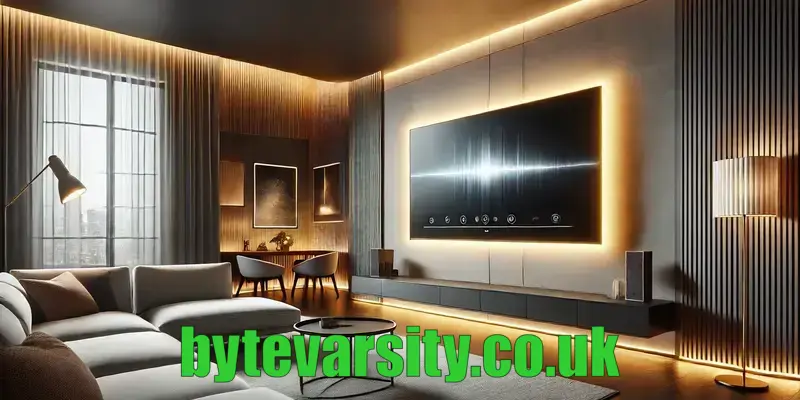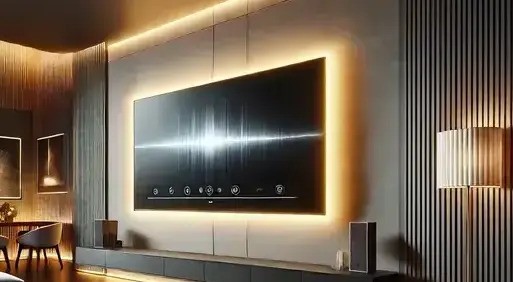When you think of upgrading your TV, one of the most effective enhancements is the installation of LED TV backlighting. This simple but impactful addition can transform your viewing experience, providing better picture quality, reducing eye strain, and even adding a touch of style to your entertainment area. If you’re considering upgrading your TV setup, here’s everything you should know about LED backlighting technology and how it can improve your TV’s performance.
What is LED TV Backlighting?
LED light TV backlighting refers to the array of light-emitting diodes (LEDs) placed either behind or around the edges of your TV screen. These lights are responsible for illuminating the screen and improving the overall visual quality. Without backlighting, the image on the TV would be too dark and hard to see, especially in low-light environments.
The placement and design of the backlight system affect your TV’s overall brightness, contrast, and energy efficiency. Different types of LED backlighting technology offer varying levels of picture enhancement, from basic edge-lit to more advanced full-array lighting.
Advantages of LED TV Backlighting
Enhanced Picture Quality
One of the biggest advantages of LED backlighting is the improvement in picture quality. By providing more uniform lighting behind the screen, LED backlighting helps improve contrast ratios, resulting in deeper blacks and more vibrant colours. This makes your viewing experience much more immersive, especially in scenes with varying levels of brightness.
Energy Efficiency
LED lights are known for their low energy consumption compared to traditional backlight systems. This means you can enjoy a higher-quality viewing experience without significantly increasing your electricity usage. Energy-efficient LED backlighting contributes to both a lower electric bill and a more sustainable home setup.
Different Types of LED TV Backlighting
LED TV backlighting comes in several different designs, each offering distinct advantages and trade-offs in terms of performance and cost.
Edge-Lit LED Backlighting
Edge-lit LED TVs are among the most affordable options. LEDs are placed along the edges of the screen, and the light is diffused across the entire display. While this system is slim and inexpensive, it may not provide the same level of brightness or uniformity as more advanced backlighting options.
Direct-Lit LED Backlighting
Direct-lit backlighting features LEDs placed directly behind the screen, providing more consistent illumination. While these systems tend to be bulkier and more expensive than edge-lit models, they offer better uniformity in brightness and improved picture quality, especially in dark scenes.
Full Array LED Backlighting
The most advanced type of LED backlighting is full-array technology. Here, the LEDs are spread evenly across the back of the screen, allowing for more precise control of brightness and contrast. Full-array backlighting also supports local dimming, which helps improve the contrast by dimming dark areas of the screen without affecting lighter parts.
How LED Backlighting Improves Your Viewing Experience
Superior Visuals
LED backlighting improves your TV’s picture quality in several ways. By providing better brightness control, it enhances contrast, which helps in displaying more vivid colours and fine details, especially in dark scenes. Whether you’re watching movies, sports, or TV shows, the quality difference is noticeable, making your entertainment more lifelike.
Lower Energy Consumption
Unlike traditional backlighting systems, LED lights use much less power. This makes LED backlighting not only a more eco-friendly option but also an efficient one. If you’re looking to cut down on your energy usage without sacrificing performance, switching to an LED-backlit TV is a great choice.
Common Problems with LED TV Backlighting
Though LED backlighting provides significant advantages, there are some issues that you may encounter.
Backlight Bleeding
Backlight bleeding occurs when the light from the LEDs leaks into dark areas of the screen, causing an uneven distribution of brightness. This can result in a noticeable glow around the edges of the screen, which is especially apparent in scenes with dark backgrounds. While it’s not a common issue, it can affect your viewing experience if present.
Dimming Issues
LED TVs with local dimming features can sometimes experience dimming problems, where certain areas of the screen either become too dark or fail to adjust properly. This issue can disrupt the overall picture quality and diminish the immersive experience that LED backlighting is meant to offer.

Why Choose LED Light TV Backlighting for Your Samsung TV?
For those who own a Samsung TV or are looking to upgrade their viewing experience, LED light TV backlighting is one of the best choices available. If you are interested in optimizing your Samsung TV, adding the best LED backlight Samsung TV can significantly improve its performance. To explore the top LED backlight options for your Samsung model, check out Byte Varsity’s LED Backlight Guide for recommendations and reviews.
Conclusion: Is LED TV Backlighting Worth It?
LED light TV backlighting offers numerous benefits that can enhance your viewing experience. Whether it’s improving picture quality, reducing eye strain, or contributing to energy efficiency, the advantages are clear. If you’re thinking about investing in a new TV or upgrading your current setup, LED backlighting should be at the top of your list.
By understanding the different types of LED backlighting and how they affect picture quality, you can make an informed decision that aligns with your viewing needs and budget. With its ability to boost visuals and reduce energy consumption, LED TV backlighting is a smart choice for anyone looking to take their TV viewing to the next level.
